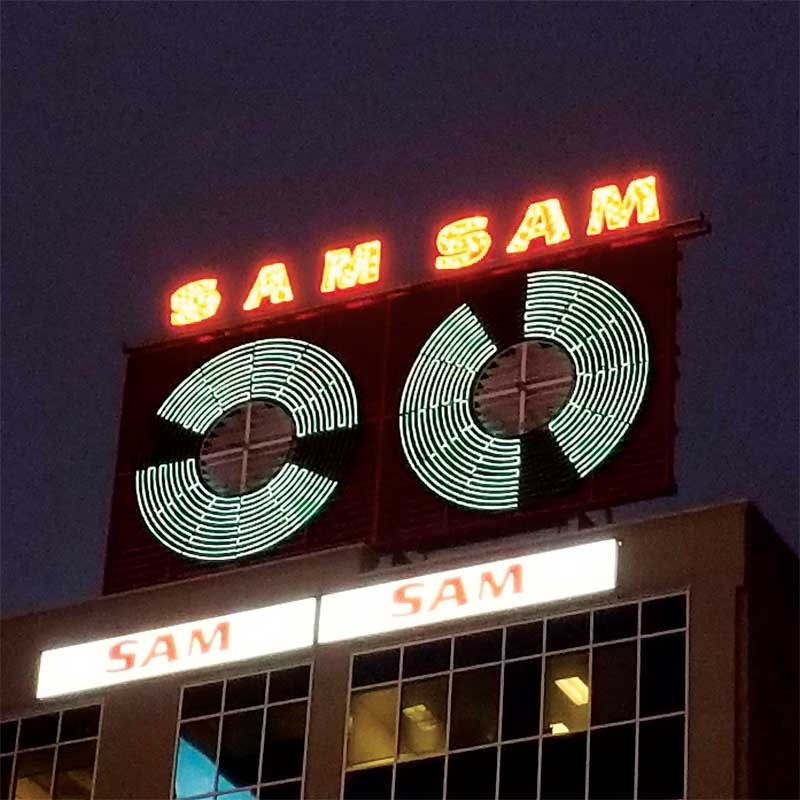A different setting
Another major challenge was re-engineeringthe sign for its new location. Instead of being mounted flush to a street-level façade, after all, it would now be installed atop the roof of an 11-storey building.
“The building is 80 years old and started out with four storeys before another seven were added in the 1980s,” Carley explains, “so we were very restricted in terms of the weight load we would be adding.”
For this reason, the backlit signboxes were wall-mounted just below the roofline, with their drivers installed on the other side of the wall, so they could be accessed from the roof.
“The signboxes might appear a bit off-centre from some angles,” Bianchi explains, “as the structure holding the records is actually set up about 1.8 m (6 ft) back from the edge of the roof.”
Wind load regulations, meanwhile, required 67 per cent of the main sign background to be open, so as to allow moving air to pass directly through them.
“I worked with engineers to develop a new louvred system,” says Bianchi. “The background of the sign would look like a solid panel, but would actually be slotted, like a set of Venetian window blinds.”
The concept won approval, albeit not without compromise. Bianchi wanted the louvres to sit at a 45-degree angle, for example, to allow optimal viewing from the street below the building, but this configuration would not have adequately dealt with the horizontal wind load, so it was rejected.
Another issue was snow loading. Sunset had to add a heating system to melt any ice and snow that might collect on the louvres. This system is activated by temperature sensors, which are both connected to a standard electrical supply and hooked up to a generator for backup power in case of a wintertime blackout.
The system’s warmth, in turn, created another issue by attracting pigeons to roost. So, wire barriers were added in front of and behind the louvres to keep the birds away.
Back in the public eye
The processes for the engineering drawings, determining all logistics, applying for permits and installing the signage at night all stretched out the timeline. Completion had been anticipated for mid-2017, but the installation was pushed back into the fall and the lighting ceremony was delayed until early January.
“There was a countdown event with a big red button,” says Bianchi. “The mayor of Toronto, John Tory, attended the event, as did Sniderman’s son Bobby, who was quite emotional. Tory mentioned us in his speech and we were interviewed on TV. This was definitely the best thing I’ve worked on in my 40 years in the sign industry. The logistics were challenging, but there was a lot of co-operation across the board, from City Hall to Ryerson. Everybody supported this project 100 per cent.”
With files from Sunset Neon. For more information, visit www.sunsetneon.com.






